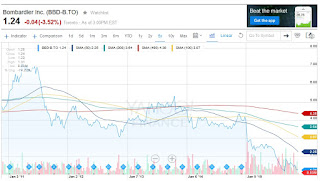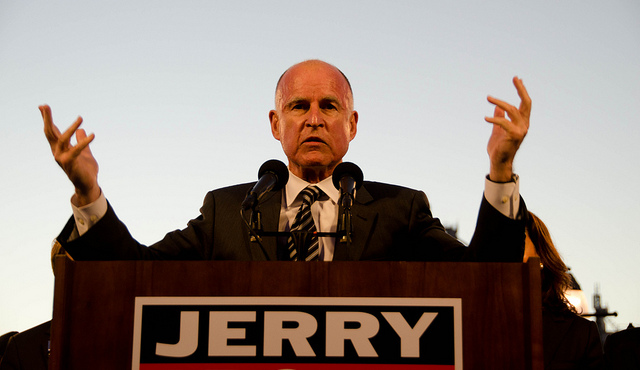Reporter Ed Mendel covered the California Capitol in Sacramento for nearly three decades, most recently for the San Diego Union-Tribune. More stories are at Calpensions.com.
First CalPERS announced last year that it was cutting the eye-popping pension of a former city of Vernon official, Bruce Malkenhorst, from $551,688 a year to $115,848.
Then yesterday the CalPERS board approved the recovery of a $3.5 million pension overpayment from Malkenhorst, 84, who retired in 2005 from the tiny industrial city south of downtown Los Angeles known for corruption.
Malkenhorst received the huge pension, later cut by an amount larger than any current CalPERS pension, for serving as the full-time Vernon city administrator/clerk, while also holding several other top city positions and reportedly earning more than $911,000 a year.
The CalPERS board began the recovery action after an administrative law judge agreed that the Malkenhorst pension should be reduced because it was based on final pay that was not properly disclosed.
“As the judge specifically found, Malkenhorst and other Vernon officials intentionally obscured Malkenhorst’s pay increases, making it impossible for the public to figure out how much the city was paying for what services, and subverting the law’s transparency requirements,” Mathew Jacobs, CalPERS general counsel, said in a news release.
“CalPERS will not tolerate these kinds of abuse. We remain on the lookout for all forms of pension spiking and encourage the public to help us root it out.”

An attorney for Malkenhorst, John Michael Jensen, told the CalPERS board the issue has become “highly politicized.” He warned against a “cavalier disregard for the legal framework of vested rights” by going back 10 years to recover $3.5 million.
“It’s a dangerous idea — that the idea of vested right property rights, which the board has been very vigilant about with the Stockton bankruptcy and these initiatives we have just heard about” can be changed by the administrative process, he said.
Whether this and other arguments from Jensen swayed some board members was not clear. The decision to affirm part of the administrative law judge’s decision and seek recovery of the overpayment was made in closed session on a 9-to-2 vote.
Malkenhorst pleaded guilty in 2011 (to long-stalled charges originally filed in 2006) of illegally using city money for golf, massages, meals and other things. He received probation, $35,000 in fines and penalties, and repaid the city $60,000.
An audit of Vernon begun by CalPERS in 2011 led to an original announcement in May 2012 that Malkenhorst’s pension would be cut because it “was illegally based on unpublished pay rates, overtime and an inflated longevity allowance.”
Malkenhorst contested the pension cut. CalPERS announced in March last year that his pension had actually been cut, citing a new appeals court ruling in an Oakland case “that retirement systems must correct overpayments sooner rather than later.”
After a six-day hearing stretching from August last year to February this year, an administrative law judge issued a ruling in July agreeing with the CalPERS decision to reduce the pension improperly based on a “catch-all pay rate category.”
But the judge said CalPERS acted arbitrarily in selecting the pay rate on which the new sharply reduced pension is based and lacked evidence to conclude that he was receiving overtime pay.
In September, the CalPERS board did not adopt the judge’s ruling, choosing instead to hold a full board hearing this month that would include the decision to begin the action to recover the overpayment of $3,486,191.
Jensen argued that the administrative law judge did not address the recovery of an overpayment and that board action would lack “due process.” A CalPERS attorney said recovery of an overpayment by the pension system is clearly allowed by state statute.
CalPERS based the reduced pension for Malkenhorst on the pay of the acting city clerk, arguing the “position most closely resembled the former city administrator/city clerk position the city had disclosed to the public on pay schedules.”
Jensen said Malkenhorst’s successor was paid $335,000 a year and that CalPERS had selected the lowest pay to determine the new pension. CalPERS said the acting clerk was the immediate successor and the higher-paid successor was hired several years later.
The Malkenhorst pension, $551,688 a year, tops the list of large California Public Employees Retirement System pensions on the Transparent California website of California public employee pensions.
Next are Michael D. Johnson, Solano County, $384,252; Stephen Maguin, Los Angeles County Sanitation District, $339,889; Joaquin Fuster, UCLA, $333,871; Donald Gerth, CSU Sacramento, $313,145, and William Garrett, El Cajon, $307,268.
When the Malkenhorst pension cut was announced in 2012, CalPERS also said it took action against six other Vernon officials. Three were ineligible for pensions because they were contractors. Others had service and pay discrepancies.
The Vernon crackdown came after CalPERS had cut the pensions of officials of the nearby city of Bell, some convicted of felony corruption. The top Bell official, Robert Rizzo, reportedly was on track to receive a pension of about $650,000.
Vernon only had a population of 112 in the 2010 census, the smallest of any incorporated California city. But the city website says it has 1,800 businesses employing about 55,000 persons.
Two families, the Malburgs and the Malkenhorsts, have run Vernon in the past, Forbes magazine said in 2007. Leonis Malburg, whose grandfather founded the city in 1905, was mayor for 33 years.
Malkenhorst, who began working for the city in 1977, became the treasurer and city administrator/city clerk in 1978. He later added several positions, including chief executive of the city-owned power plant that sells electricity to the businesses.
“During the height of his time in Vernon, Malkenhorst was driven around in a limousine and often spent his mornings playing golf,” the Los Angeles Times reported. “When he retired in 2005, he was succeeded by his son, Bruce Malkenhorst Jr., who left in 2008.”
A former Vernon city administrator and city attorney, Eric Fresch, who made $1.6 million in 2008, was found dead in the water off Angel Island in San Francisco Bay in 2012 hours after the release of a state audit critical of Vernon, the Los Angeles Times reported. The Marin County coroner’s office said he slipped while walking on wet rocks and hit his head.
A similar but possibly more mysterious incident opened HBO’s “True Detective” this year in which the fictional city of Vinci was based on Vernon, the show creator, Nic Pizzolato, told Vanity Fair and GQ magazines.
“After a series of investigative stories in 2010, the state Legislature attempted to disincorporate the city (Vernon), but that effort failed,” the Los Angeles Times reported last June.
“Since then, new leaders emerged and reform efforts were undertaken, including allowing the creation of private housing to boost Vernon’s population and slashing of city council members’ salaries.”










